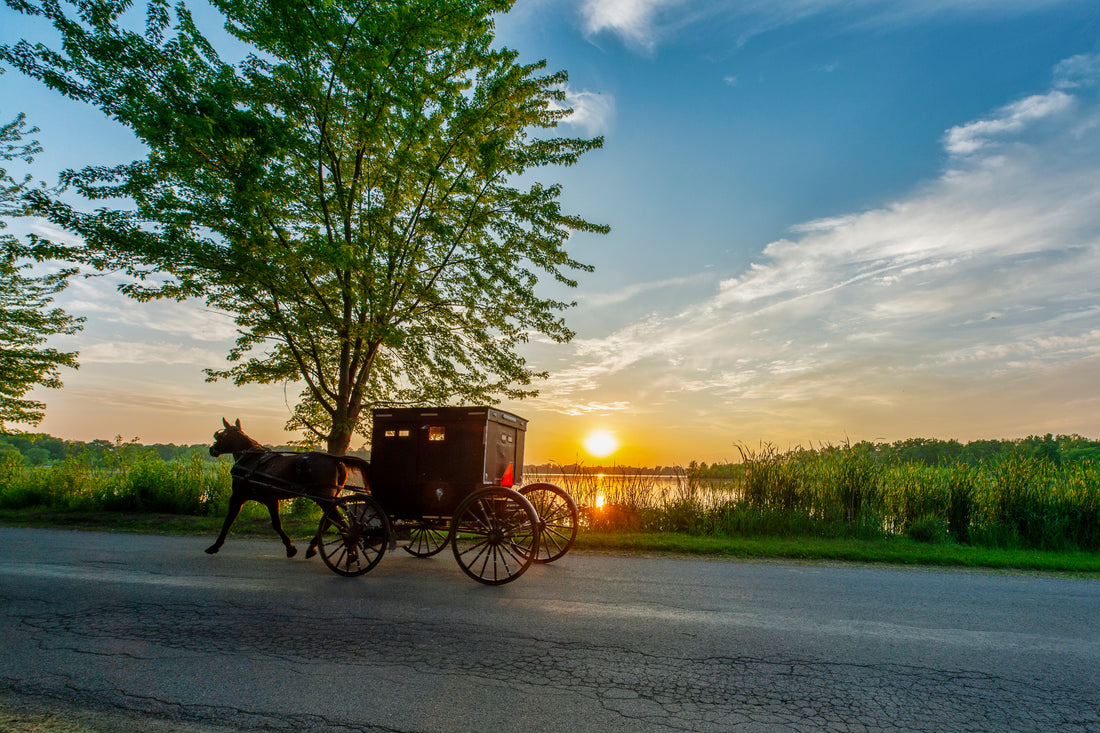
The Simple Life
Dr. Linda HancockSeveral years ago, I became a member of a family tree software program. I was surprised to learn that in the mid-1700s some of my ancestors lived in Pennsylvania and appeared to have Amish roots. As a child I had heard family talk about my maternal grandfather being Pennsylvania Dutch but, at the time, didn’t connect this with the Amish. So, a few years ago I decided to visit Bird In Hand, Pennsylvania to learn about the people. What an interesting experience.
Since my trip I have been fascinated with the Amish ways. Don’t get me wrong – I won’t last a week without electricity or the blessings that I now enjoy in my life. But there are many Amish values and traditions that are worth noting as follows:
- Work – The Amish are not preoccupied with escaping hard work. In fact, they find meaning and fulfillment in ensuring that their work is well done and valued.
- Education – Children learn practical skills such as reading, writing and arithmetic in small schoolhouses. Learning is focused on preparing children for life with direct input into the curriculum from the parents. Often the children read stories in German and answer in English so that they become bilingual. Some also know high German. School attendance ends when the child completes grade eight. At that point, the boys are either full-time in the family business or sent to paid apprenticeship with a tradesperson. By the time they are twenty, they have enough expertise and confidence to earn their own living. The girls are not only taught domestic tasks but also learn about health so that they can care for their family members.
- Stewardship – Land, animals and home are primary values for the Amish. They take care of these things because they appreciate having them. Their homes are simple, practical, and humble. Most of the furniture is handmade. Animals are well cared for, and the land is protected.
- Economy – Because of rising land prices, fewer Amish are farmers now. Needing more land means they need more horses and more feed. They therefore need to be creative to survive. Many open businesses where they sell crafts, tourist souvenirs or building projects. Only five percent of Amish businesses fail. This is because their work ethic is high, they are always on time, and they are willing to work long hours.
- Community – The Amish work together to support each other. They value group over individual perspectives. If a barn burns down, for example, there could be 600 men who show up within days to build a new one. As many women arrive and cooperate with each other to ensure that everyone is fed. Amish also support the municipalities where they live. For example, because they only use horse and buggies for transportation and horseshoes damage pavement, so they freely donate money to the districts for road repairs.
- Self-sufficiency – The Amish tend to take care of their own health issues as much as possible. Women practice traditional home remedies, and each community has their own health care fund to pay for members when they need to use public healthcare services.
- Identity – It is difficult for the Amish to manage change as there are always conflicting forces. They want to protect their symbols, self-sufficiency, routine, and tradition. At the same time, they realize that if they don’t change, they might fail to survive economically. Because of this they are slow to find and adopt change.
- Spirituality – Baptism is a very serious lifetime commitment. The Amish allow their children to have a “Rumspringa” or “running around” period from about the age of sixteen until they are ready to join the faith. Marriage is also not taken lightly and even the wedding gifts consist of practical items such as dish soap, thread, and cloth. Forgiveness and hope are tenants of the faith. They learn these by watching elders and then practicing what they have learned.
- Expansion – The population of the Amish doubles every twenty years. Districts often have members move to new areas to establish new communities. In Canada, for example, the most recent Amish community is growing on Prince Eduward Island. The Amish always choose to survive and have an inter-generational plan for continuance. Some sects are more liberal than others based on leadership which writes the Ordnung or rules for the community.
- Charity – The Amish are kind and generous folk who help themselves and others. They are known for sending funds for example, to the third world country of Haiti.
The Amish is a unique ethnicity that uses relationship, interdependence, tradition, and self-sufficiency to maintain their viable economy and generational endurance. They reject many modern ideas and cling to those that have allowed them to prosper, grow and garner respect.
We might not be Amish or even want to be Amish, but we need recognize that they have many values and practices that are worthy of consideration and possibly adoption into our own lives.
